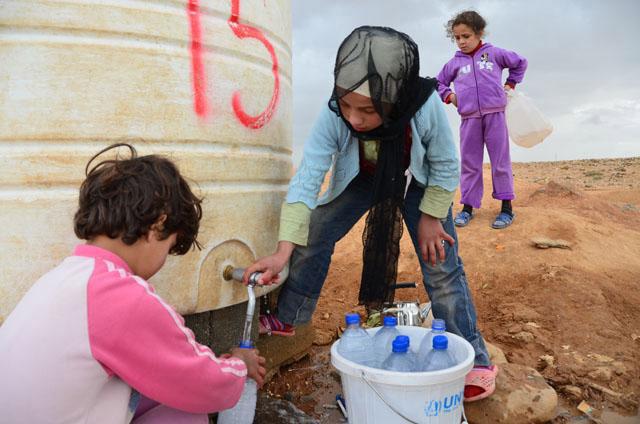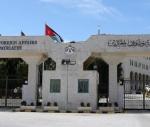You are here
‘Annual water per capita share dropped by 16% since start of Syrian crisis’
By Hana Namrouqa - Jan 18,2016 - Last updated at Jan 18,2016
AMMAN — Responding to a drop in annual per capita share of water by 16 per cent over the past five years, the government has launched a 10-year water strategy to bridge a growing gap between supply and demand.
Demand for water in Jordan has risen by 21 per cent since the Syrian crisis started, according to official figures.
The 2016-2025 National Water Strategy, announced on Sunday, indicated that not only has the per capita share dropped from 147 cubic metres per year to 123 cubic metres per year since the start of the Syrian crisis, but the cost recovery of operation and maintenance in the water sector has also dropped from 110 per cent in 2010 to 70 per cent in 2014.
The drop in both water share and cost recovery is due to the influx of Syrian refugees into the Kingdom and a rise in the cost of electricity used in water pumping by 220 per cent, according to the strategy, a copy of which was made available to The Jordan Times.
In order to bridge the growing gap between supply and demand, the Water Ministry seeks under the new strategy to explore new resources to generate 187 million cubic metres (mcm) of fresh water and increase the storage of the country’s dams by 25 per cent to around 400mcm from the current 325mcm.
In addition, the ministry is relying on its Red Sea-Dead Sea Water Conveyance Project to provide 85mcm of water under its first phase — the implementation of which will occur during the years 2017-2021 — and an additional 150mcm under the project’s second phase, which will be implemented during 2020-2025.
The strategy also includes plans to provide 36mcm of surface water for irrigation, among other purposes: generate an additional amount of 94mcm of treated wastewater; and develop Wadi Araba.
“Implementing all of the above will raise the daily water per capita share from the current 80 litres to 105 litres,” according to the strategy.
During last year, national water demand stood at 1.205 billion cubic metres, while supply stood at 972mcm, according to the ministry’s figures, which showed that the water deficit last year was 233mcm.
In 2020, the ministry expects water demand to rise to 1.328 billion cubic metres and supply to increase to1.148 billion cubic metres, narrowing the deficit to 180mcm.
By the year 2025, water demand is expected to stand at 1.698 billion cubic metres, water supply will be 1.558 billion cubic metres and the deficit will drop to 141mcm after implementing the strategy’s goals and projects.
Regarding electricity cost and its impact on cost recovery of operation and maintenance, the ministry is planning to improve its energy efficiency to reduce its electricity bill.
The cost of electricity for pumping water stood at JD141 million in 2014, which constituted 45 per cent of the operation and maintenance cost that year, according to the strategy, which indicated that the use of renewable energy technologies will be expanded to protect the environment and control fluctuating energy cost in the water sector.
“By 2025, energy consumption at water utilities will be cut by 15 per cent, while renewable energy’s contribution to the water sector’s energy supply will be raised to 10 per cent,” the strategy said.
Under the plan, the ministry will implement 15 projects to provide additional fresh water, five of which are national schemes; while for generating more irrigation water, the ministry is planning to implement 12 projects, most of which are new dams.
The cost of the 10-year strategy is JD5.3 billion, and the volume of investment required to implement its projects is JD540 million per year.
In a statement e-mailed to The Jordan Times on Monday, Water Minister Hazem Nasser said Jordan “has a vision to tackle its water crisis that relies on clear goals, policies and programmes”.
Related Articles
AMMAN — The Water Ministry has started implementing its recently announced 10-year strategy to generate over half-a-billion cubic metres (bc
AMMAN — Unconventional water sources are the Kingdom’s long-term solution to its water dilemma, government officials said on Wednesday, indi
AMMAN — Jordan’s water deficit dropped by 8 per cent this year compared to 2017, government officials said, attributing the decline to an in

















